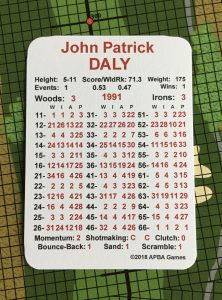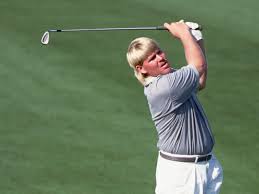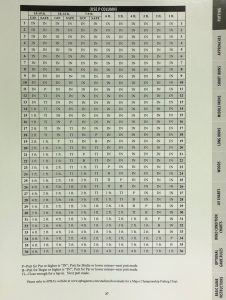
There have been a lot of excellent golf films over the years, The Greatest Game Ever Played, The Legend of Bagger Vance, Tin Cup, Happy Gilmore, and of course Caddyshack. Some are based on inspiring true events, others are comedy. It seem like a skilled filmmaker could create a biopic on the life and career of John Daly that would include inspiring true events, humor, and unbelievable legendary feats.
For example, one scene could be Daly’s chance pairing with 13-year old Tiger Woods in a 1989 youth golf tournament. In that tournament, Daly destroyed a golf ball during a 220-yard 5-iron shot that stunned the young Woods. The ball literally came apart as it rolled onto the green.

Of course, the main focus of the film would be John Daly’s improbable rise to stardom in 1991 when he won the PGA Championship. After joining the PGA TOUR in 1991, Daly garnered quite a bit of media attention from his victory, due to the fact that he was the ninth and final alternate for the event. The eight other alternates couldn’t make it. Daly, playing in just his third major, secured a three-stroke victory. That earned him PGA TOUR Rookie of the Year honors in 1991…and his first APBA card.

Having just started playing APBA Golf, I can’t say I’m an expert on reading APBA Golf cards. However, I can tell you that this card should play like John Daly did. With its many 1s, 2s, 3s, and 4s for woods (W) and iron (I) shots, it should hit the ball long from the tees and fairways. However, with several numbers in the high 20s and low 30s in the W and I columns, he’ll also periodically hit shots way left or right. Daly’s putting is much like his driving, all or nothing. With a 1, 3, and 5 in the putt (P) column, Daly has a chance to make a long putt. However, with many numbers over 25, he also is likely to miss short putts. If you remember watching a young John Daly, this card should produce similar results. The beauty of all APBA games is the ability to produce a feeling and picture in your mind that the events in your APBA game are like the sport you’re playing.
Daly turned pro in 1987, and he earned his first pro victory soon after at the 1987 Missouri Open. After his success in 1991, Daly won the British Open in 1995 in a playoff with Italian golfer Costantino Rocca at St. Andrews. However, Daly is the only eligible two-time major winner never selected to play in the Ryder Cup. Part of the reason for his snub is the negativity he earned for his freewheeling attitude. It’s no secret Daly had a problem with alcohol which led to his downfall as a golfer. After getting help, Daly went on to win the Buick Invitational in 2004, and earned the PGA TOUR Comeback Player of the Year distinction that year.
Yet, John Daly will always be known for his driving distance off the tee, earning him the nickname “Long John.” With Daly constantly pushing the 300-yard drive barrier in the early 1990s, the modern golf game was born. Before Daly, professional golf was about technique and course management. Daly, coming from a humble background, ushered in a era of power and panache. He played courses like amateurs play weekend scrambles. Now, it is a common sight to see PGA TOUR players hitting 300-yard drives along with once inconceivable distances on iron shots. Players from Tiger Woods to Rory McIlroy have refined the power golf game since John Daly broke onto the scene. However, Daly’s contributions should be remembered. I hope one day we’ll all get to relive Daly’s accomplishments and entertaining story in a film. I’d call it Long John.




Good stuff here! I know you’re learning the golf game so I wanted to let you know that the numbers from 31-36 for W shots are generally crushed and usually have a very positive result for the golfer. This would be the same for a 2 iron, 3 iron or 4 iron.
For the shots with the I column (5 iron through SW), you really want single digit results other than 12, 24 or 36.
A shots you want the same for the most part of I shots, however – sometimes a “bad result” ends up in a good shot.
Putting: lower the better. For putting, the dreaded dice roll of 54 usually gives your terrible results, with one exception – sometimes on really long putts a result of say 33 can actually be really good.